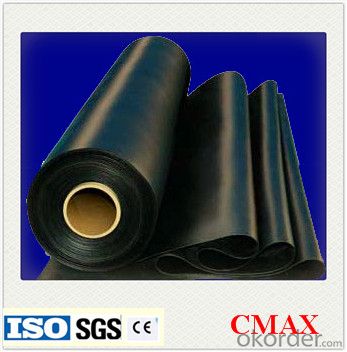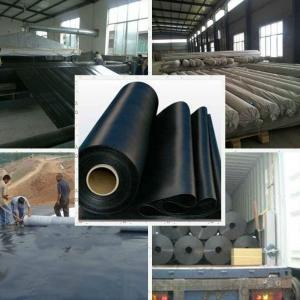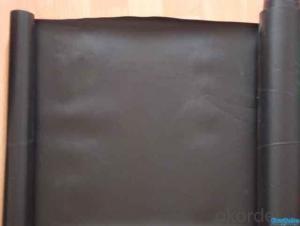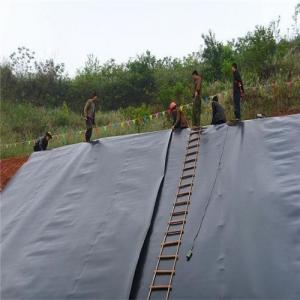100% Virgin Material Landfill Geomembrane - LDPE/HDPE/LLDPE
- Loading Port:
- Qingdao
- Payment Terms:
- TT OR LC
- Min Order Qty:
- 5000 m²
- Supply Capability:
- 500000 m²/month
OKorder Service Pledge
OKorder Financial Service
You Might Also Like
Specification
LDPE/HDPE/LLDPE Geomembrane 100% Virgin Material
Geomembrane Description
HDPE Geomembrane liner are made from polyethylene polymer materials that blow molding,its main function is to prevent the liquid leakage and gas volatile. According to the production of raw materials can divide into HDPE geomembrane liner and EVA geomembrane liner,etc.



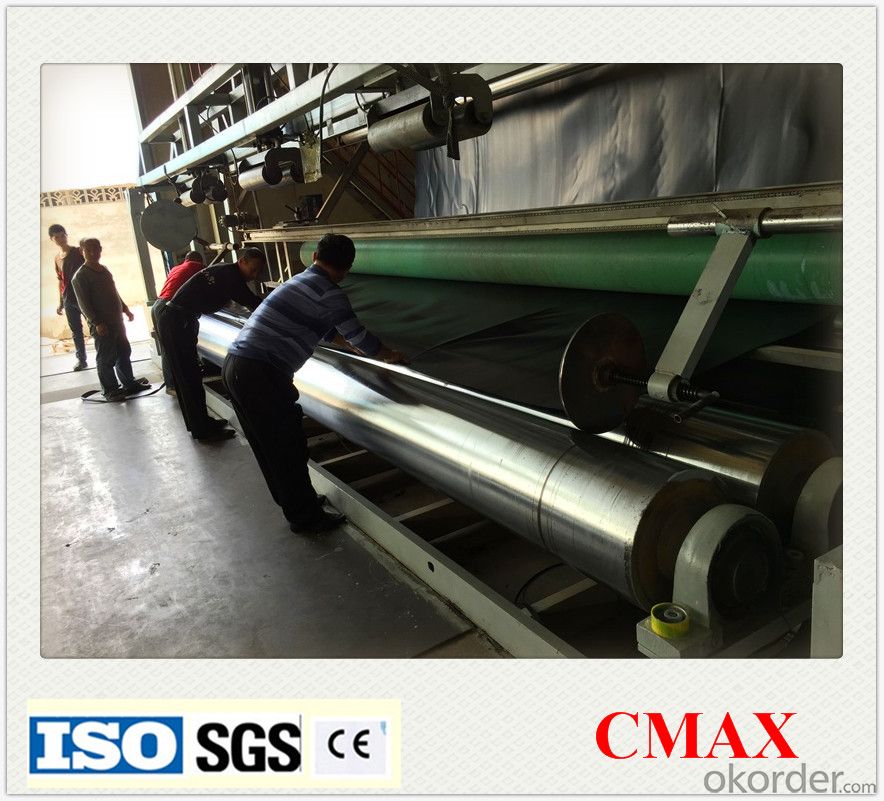
Geomembrane Specification
1. Thickness: 0.1mm-3.0mm
2. 4m-9m in roll width, the length as clients' request.
Geomembrane Property:
Excellent waterproof, heat preservation, easy for welding, chemical and UV resistance.
Geomembrane Application:
1.landfill,sewage or control the waste residue seashores seepage.
2.Lake dam,tailings dams,sewage dam and reservoir,channel,storage of liquid pools(pit,ore)
3.The subway ,tunnel,anti-seepage lining of basement and tunnel.
4.To control the roadbed and other foundation saline seepage.
5.Dike,the front of the sam foundation seepage prevention bedding,level of vertical impervious layer , construction cofferdam,waste field.
6.Seawater,freshwater fish farms.
7.Highway,the foundations of the highway and railway;the expansive soil and collapsible loess of the waterproof layer.
8.Anti-seepage of roofing
FAQ:
Q1: What is your minimum order quantity?
A:The minimum order quantity is 5000 sqm.
Q2:What is your payment terms?
A: T/T,Western Union,Paypal,L/C...
Q3:What is your delivery time?
A:Production time usually costs 2-20 days.
Waiting to cooperate with you!
- Q: How many models of composite geo-membrane are there?
- The followings are composite geo-membrane specifications and models: one cloth and one membrane(cloth: 100-1000g / m2 Thickness of membrane: 0.1-1.5mm) two cloth and one membrane (cloth: 80-600g / m2 Thickness of membrane: 0.2-1.5mm) one cloth and two membrane (cloth: 100-1000g / m2 Thickness of membrane: 0.1-1.5mm) multi cloth and multi membrane(cloth: 100-1000g / m2 Thickness of membrane: 0.1-0.8mm)
- Q: How do geomembranes contribute to oil and gas containment?
- Geomembranes are impermeable barriers made of synthetic materials that are used to contain and prevent the leakage of fluids, including oil and gas. These membranes are specifically designed to provide a reliable and durable solution for storing and transporting oil and gas by creating a strong barrier that prevents any release or seepage of the stored fluids. By effectively containing oil and gas, geomembranes help to minimize the risk of environmental contamination and ensure the safe and efficient handling of these valuable resources.
- Q: Application characteristics of geomembrane
- Introduction of geomembrane Geomembrane can be divided into three categories: Geomembrane, reinforced geomembrane and composite geomembrane. Geomembrane density is not less than 9.0kg / m3, whose maximum elongation rate is not lower than 300%, frost resistance is not lower than -60 deg.] C, stability is not less than that of the 2% carbon black mixted in polyethylene. Reinforced geomembrane is reinforced in the film, reinforcement material is generally geotextile, nylon yarn cloth or canvas, which can be made into one cloth two membranes, two cloths three membranes, three cloths four membranes according to engineering requirements. Composite geomembrane is made by hot-pressing or binding with adhesives the membrane and acupuncture geotextile, which can be made into one cloth one membrane and two cloths one membrane according to engineering requirements. Geotextile prevents geomembrane from being punctured by contacted gravels, from being damaged by people and mechine when laying, and from damage during transportation; and at the same time it has dewatering effect, dewatering the infiltration water under membrane or pore water, accelerating consolidation of soft soil under membrane, and improving the friction coefficient of contact surface with the sandy gravel. So composite geomembrane is the optimal seepage-proof material for earth and rockfill dam.
- Q: How do geomembranes perform in high humidity gas containment applications?
- Geomembranes perform well in high humidity gas containment applications. They are designed to have low permeability, which helps prevent the escape of gases. Additionally, they are resistant to moisture and can withstand the humid conditions without deteriorating or compromising their performance.
- Q: What instrument should be used to test the pressure withstand strength of geomembrane?
- Hydrostatic pressure tester is generally used.
- Q: Can geomembranes be used in landfill gas collection systems?
- Yes, geomembranes can be used in landfill gas collection systems. They are often used as a barrier to prevent the escape of harmful gases from landfills. Geomembranes are impermeable and can effectively contain and direct the gas to collection points where it can be safely managed or utilized for energy generation.
- Q: Can geomembranes be used in pond lining?
- Yes, geomembranes can be used in pond lining.
- Q: What should be noticed when geomembrane is welding?
- The success of sewage treatment seepage control project depends on the quality of the geomembrane itself and the quality of its installation and construction.
- Q: How do geomembranes contribute to erosion control in airport runway and taxiway construction?
- Geomembranes contribute to erosion control in airport runway and taxiway construction by providing a protective barrier against water infiltration and soil erosion. They are installed beneath the runway and taxiway surfaces to prevent water seepage into the underlying soil, which can lead to erosion and structural damage. Additionally, geomembranes help to stabilize the ground by enhancing soil compaction and reducing soil movement, ensuring the long-term stability and durability of the airport infrastructure.
Send your message to us
100% Virgin Material Landfill Geomembrane - LDPE/HDPE/LLDPE
- Loading Port:
- Qingdao
- Payment Terms:
- TT OR LC
- Min Order Qty:
- 5000 m²
- Supply Capability:
- 500000 m²/month
OKorder Service Pledge
OKorder Financial Service
Similar products
Hot products
Hot Searches
Related keywords






